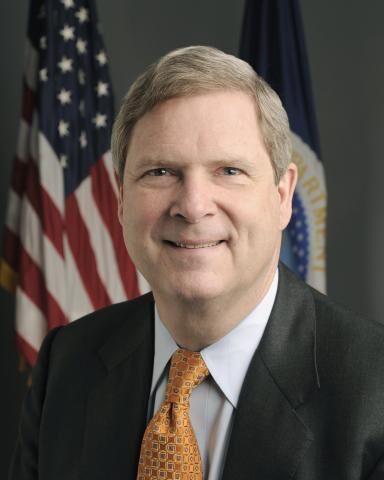Secretary of Agriculture Tom Vilsack is on a mission to improve the economic prospects of all farmers, no matter their size. And he plans to put the full resources of the U.S. Department of Agriculture behind his words.
The National Farmers Union hosted Vilsack during its annual meeting held online March 1. Among the many topics he covered in his address to members, Vilsack re-emphasized the statistic from USDA’s Economic Research Service that nearly 90% of American farmers, ranchers and producers do not make the majority of their income from farming operations, instead supplementing with off-farm income in one form or another. It’s a sobering statistic that has prompted the secretary to focus on more markets, new and better markets, and fair markets for American farmers and ranchers.
“If we’re going to turn things around, it’s going to be necessary for us to work to create new sources of income, of revenue streams so that farmers aren’t just solely dependent on the sale of their production,” he told NFU members. Vilsack once again said that agriculture is poised to be a leader in the carbon sequestration efforts, but that rural American must be engaged in crafting the market.
“It has to be crafted with financial incentives and market incentives, not for the investment class, but designed and constructed and implemented for the farmer,” Vilsack said. He said he sees new revenue streams for farmers that include converting agricultural wastes like manure into products that can have added value like pelletized fertilizer, or capturing methane from livestock and adding it to the renewable fuel and energy mix of this country.
Of particular interest to NFU members was Vilsack’s promise that the USDA will be working to expand regional market opportunities. Those might include more food hubs and farmers markets, he said, to provide an opportunity where producers don’t have to compete all the time in commodity-based market prices that are set by someone else. Rather, create new markets where farmers can set their prices for their production. This came to light during the pandemic in 2020, when many consumers turned to local farmers to meet their food needs, due to shortages in the retail sector. Of course, that also would require more small- to medium-sized livestock processing capacity so that farmers can have their livestock harvested under USDA inspections for interstate commerce.
Vilsack said he’s instructed the USDA staff to evaluate how the previous COVID payments to farmers were allocated and make sure that everyone in the supply chain gets a fair shot at government resources.
“I’ve been told, for the resources already expended, the top 10% of producers received 60% of the payments, while the bottom 10% of producers received just 0.26% of those benefits,” Vilsack said.
Going forward, as a member of President Joe Biden’s Cabinet, Vilsack plans to make sure that agriculture is represented in any federal climate change programs, so that farmers on the ground are the primary beneficiaries and not investors on Wall Street. And, he reiterated his continuing focus on building rural infrastructure, from processing plants for production needs to increased high speed broadband internet access for farmers using precision agriculture tools, infrastructure will be key to farmer profitability now and in the future.
Jennifer M. Latzke can be reached at 620-227-1807 or [email protected].



